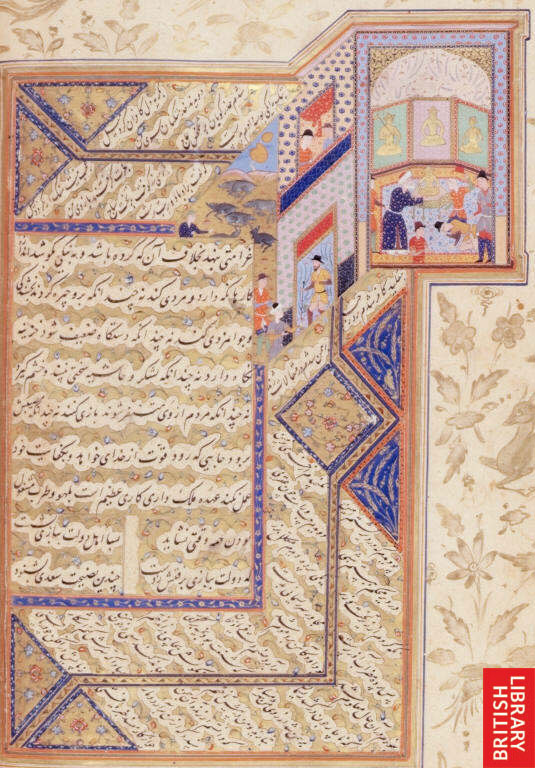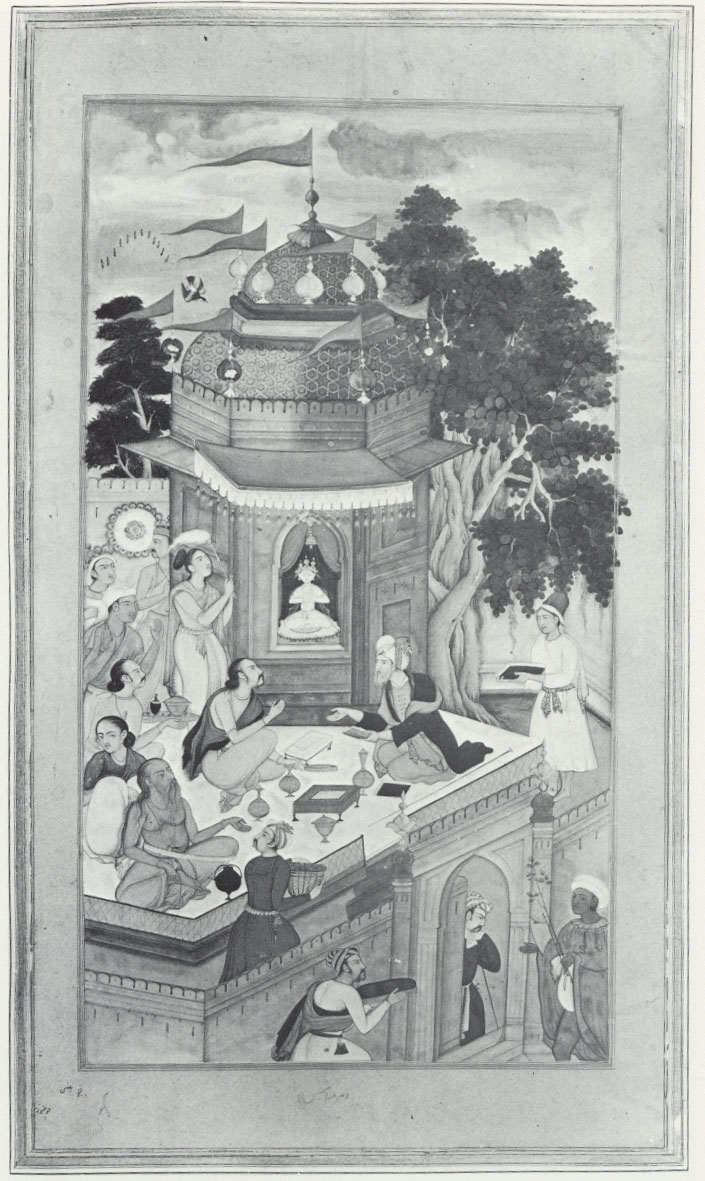


Sa'di and the idol of Somnath, India, c.1604
Source: Arts of the Islamic Book: The Collection of Prince Sadruddin Aga Khan, by Anthony Welch and Stuart Cary Welch (Ithaca: Cornell University Press for the Asia Society, 1982), p. 194; scan by FWP, Sept. 2001
"The Bustan (Garden) and Gulistan (Rose Garden) of the thirteenth-century Iranian poet Sa'di were among the most popular and frequently illustrated books in the Islamic world, particularly in Mughal India, where sumptuous copies were made for both Akbar and Jahangir....Dharm Das illustrates one of the most celebrated stories in the Bustan on folio 78b. At one point in his extensive travels Sa'di stopped at the great temple of Somnath in India, where he engaged in religious discussion with Brahmin priests. To his explication and praise of Islam they responded by demonstrating that the temple's idol gestured in response to their prayers. Initiallyconfounded, Sa'di inspected the statue at night and discovered a mechanical device that operated the image's arms. And on the following day he vindicated his own position by confronting the priests with their trickery." (pp. 191, 197)
== Indian Routes index == Indian Routes sitemap == Glossary == FWP's main page ==